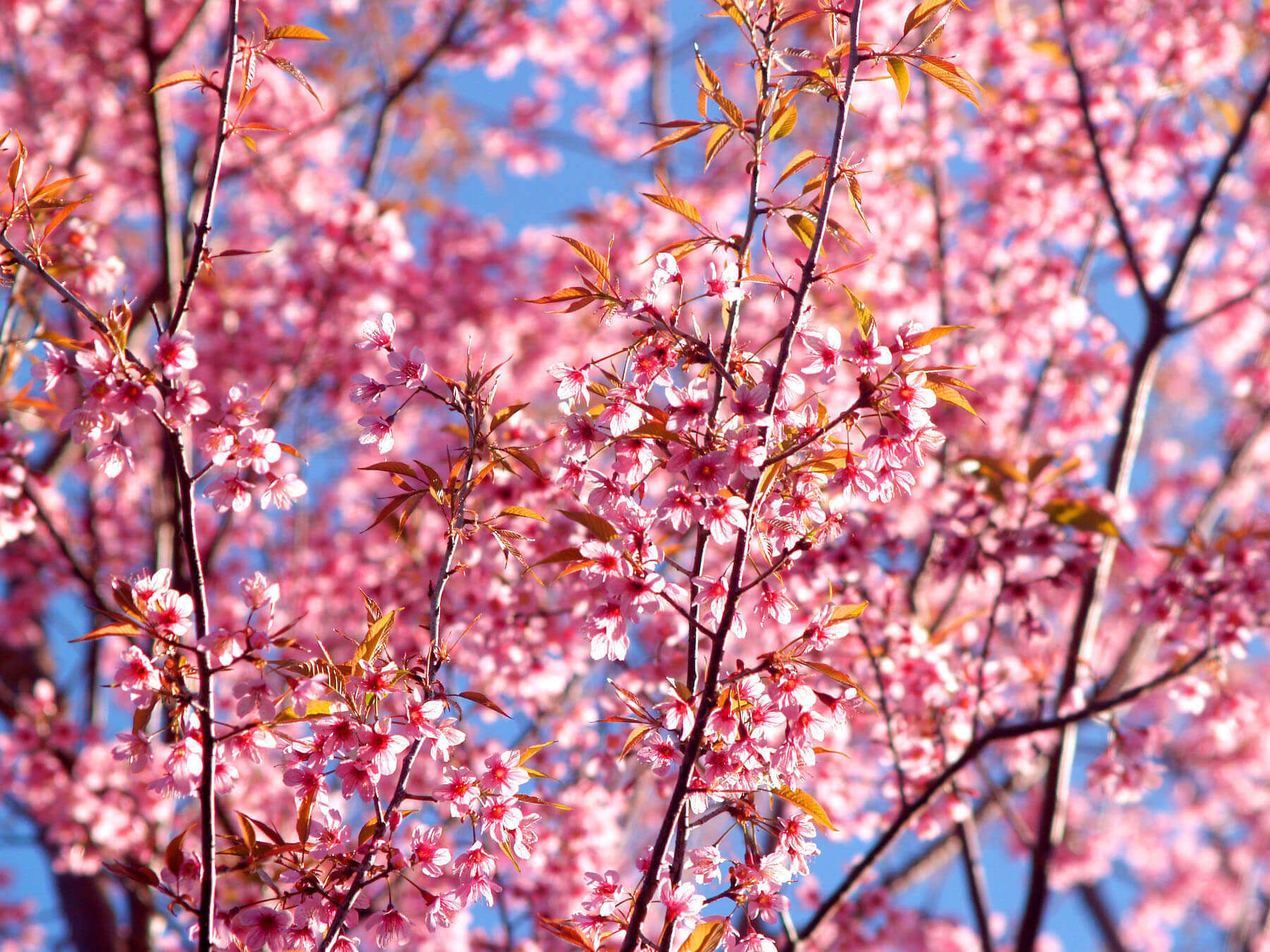



8 Beautiful Japanese Words for Cherry Blossom Season
Sakura season has arrived in Japan! This is the time of year when spring starts to appear in Japan and other parts of Asia, and people come out in force to celebrate the end of winter and marvel at the beautiful blossoms. Here’s everything you need to know about this spectacular time of year and the festivities that accompany it.
Tandem is not only for those on a language learning journey but also for those brave nomads and travelers out there. Speak the language of the locals and meet new people in the country you are traveling to. Download the Tandem app now to connect with people all across the world!
When does cherry blossom season usually happen?
It starts from the middle of March on the southern side of Japan and finishes at the end of April or beginning of May on Hokkaido, Japan’s most northerly island. Many Japanese people watch the blossom forecast - sakura-zensen (桜前線) - very carefully to know when the blossoms will appear in their area. As the blossoms only appear for two weeks at most, it is easy to accidentally miss out!

Why is the season so important in Japanese culture?
Cherry blossoms are an iconic feature of the Japanese springtime landscape. They are also said to be symbolic of Japanese spirit: of beauty, life, evanescence and death. The blooming of the blossoms represents spring, and a new start after a long cold winter. But the blossoms don’t hang around for very long - in Japanese culture, their quick departure is similar to the transient nature of life. As Japanese school graduation and entrance ceremonies happen during this season, it is a very memorable time for most Japanese people where they reflect on things past and look forward to new starts.
Artistic culture in Japan has been influenced heavily by cherry blossom season too. Many Japanese writers, artists and musicians have taken inspiration from the beautiful blossoms and the festivities taking place under the cherry trees. Here are some beautiful translations of Japanese Haikus all about cherry blossom season. Many singers sing about cherry blossom as a symbol of transience of encounter and parting in their lyrics. Much traditional and modern Japanese music uses cherry blossom as a main theme - check out these clips for a taste of Japanese Sakura music:
We need your consent to load this video
Please review the details of our functional cookies and accept them to load the video.
We need your consent to load this video
Please review the details of our functional cookies and accept them to load the video.
How do people celebrate Sakura season?
The main way to celebrate is by going to see the cherry trees in full bloom! Parks in Japan are guaranteed to be filled with thousands of people at this time of year. **Hanami (**花見) parties, or cherry blossom gazing gatherings, are also very popular in Japan during Sakura season. At these parties, groups of friends and family come together with food and drink to celebrate the arrival of spring under the blossom trees. It is common for groups to reserve the best spots for their party in advance by laying their picnic blankets down on the spot they want - sometimes several hours or even days ahead of their party!

Here are the most important words you need to know for cherry blossom season in Japan:
Sakura (桜) - Sakura means “cherry blossom” and is derived from saku 咲, which means to bloom, or alternately to smile/laugh. The 口 in 咲 indicates an open mouth. Cherry blossoms are a symbolic flower of the spring, a time of renewal, and the fleeting nature of life.
Hana-yori-dango (花より団子) - This is a funny proverb which makes fun of the fact that some people attending the hanami celebrations are more interested in the food and drink they are consuming than in looking at the flowers! It literally translates as “dumplings rather than flowers”!
Hanagasumi (花霞) - this is the Japanese word used to describe the scene with many blossoms - literally translated as the “flower haze”
Sakura-fubuki (桜吹雪) - this means “cherry blossom snowstorm”. Often cherry blossom petals dance in the spring wind, which from a distance can look like a storm of pink petals!
Hana-no-ami (花の雨) - flower rain. This is the special Japanese phrase for when rain falls on the cherry blossoms - an incredibly beautiful sight.
Hana-akari (花明かり) - flower lights. When the cherry blossom is in full bloom, the vivid color makes the darkness look much brighter than normal.
Mikkaminumanosakura (三日見ぬ間の桜) - this is a highly descriptive and evocative word in Japanese that means change happens very suddenly and intensely, much like the cherry blossoms that go from full bloom to being scattered in just a short space of time.
Hazakura (葉桜) - cherry tree leaves. Once the flower blossom has fallen, small leaves start to appear on the trees, a sign the summer will soon be on the way!
How do you celebrate the coming of spring in your country? Make sure you share your cultural experiences with your friends on Tandem!



